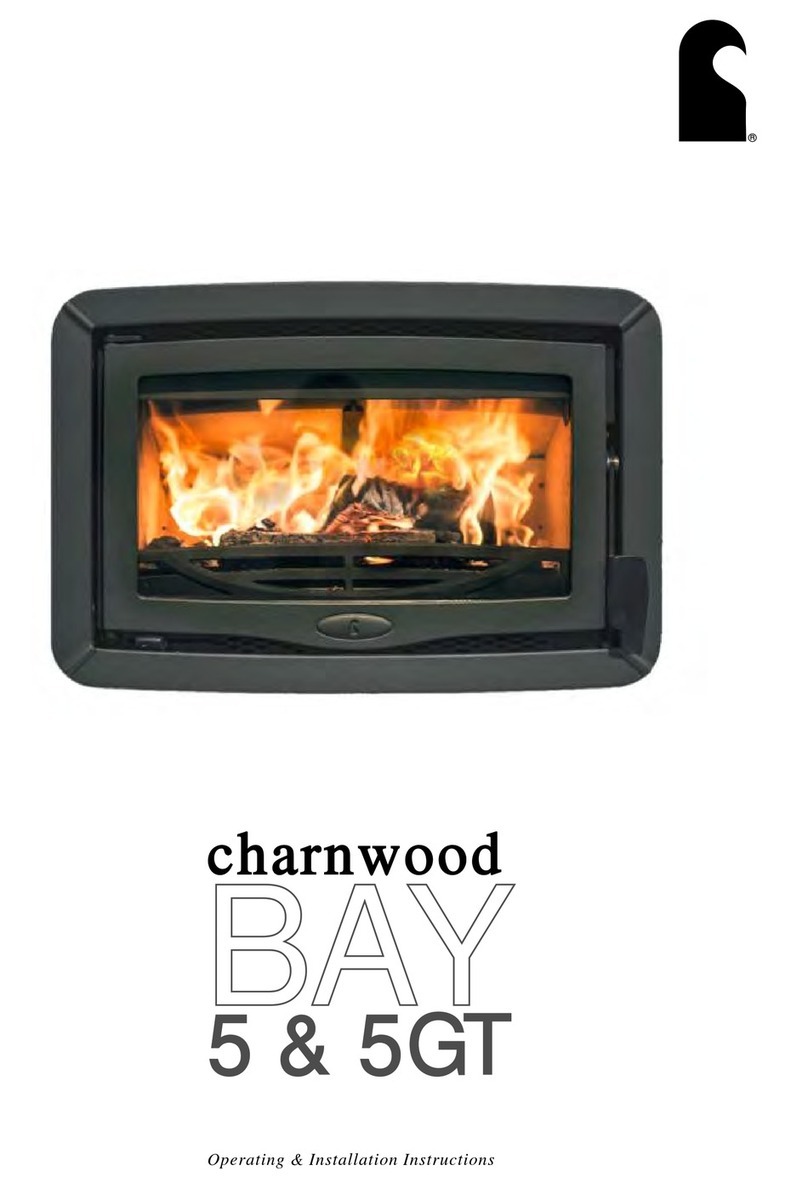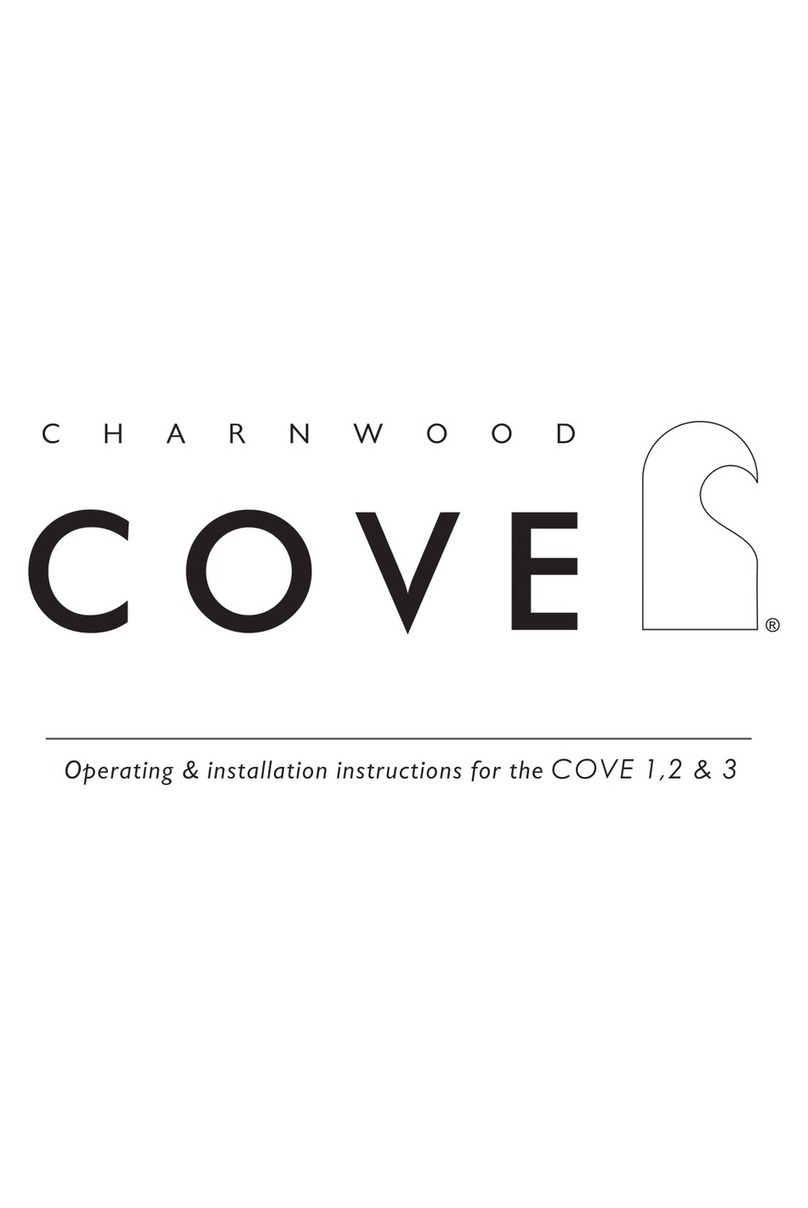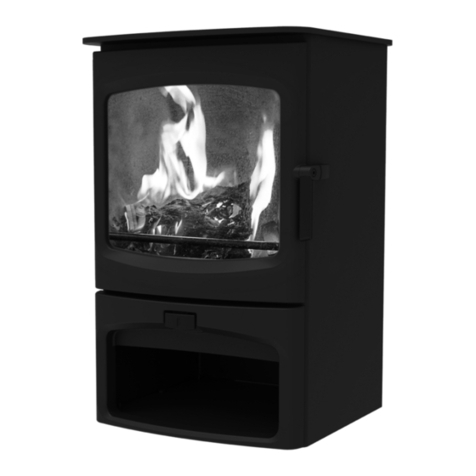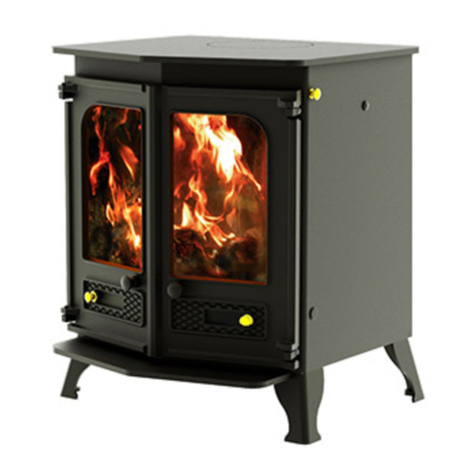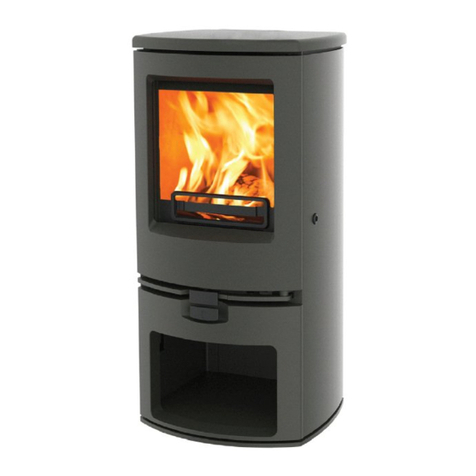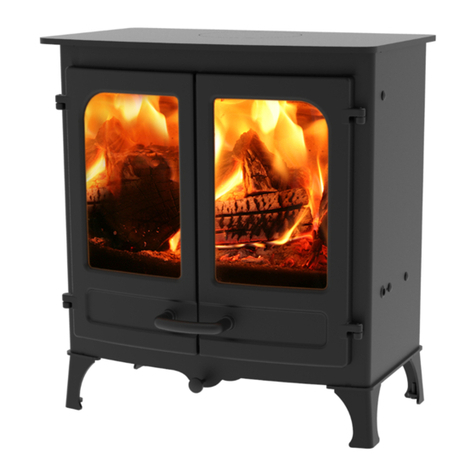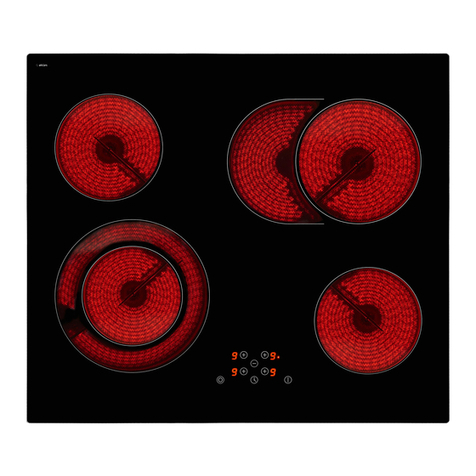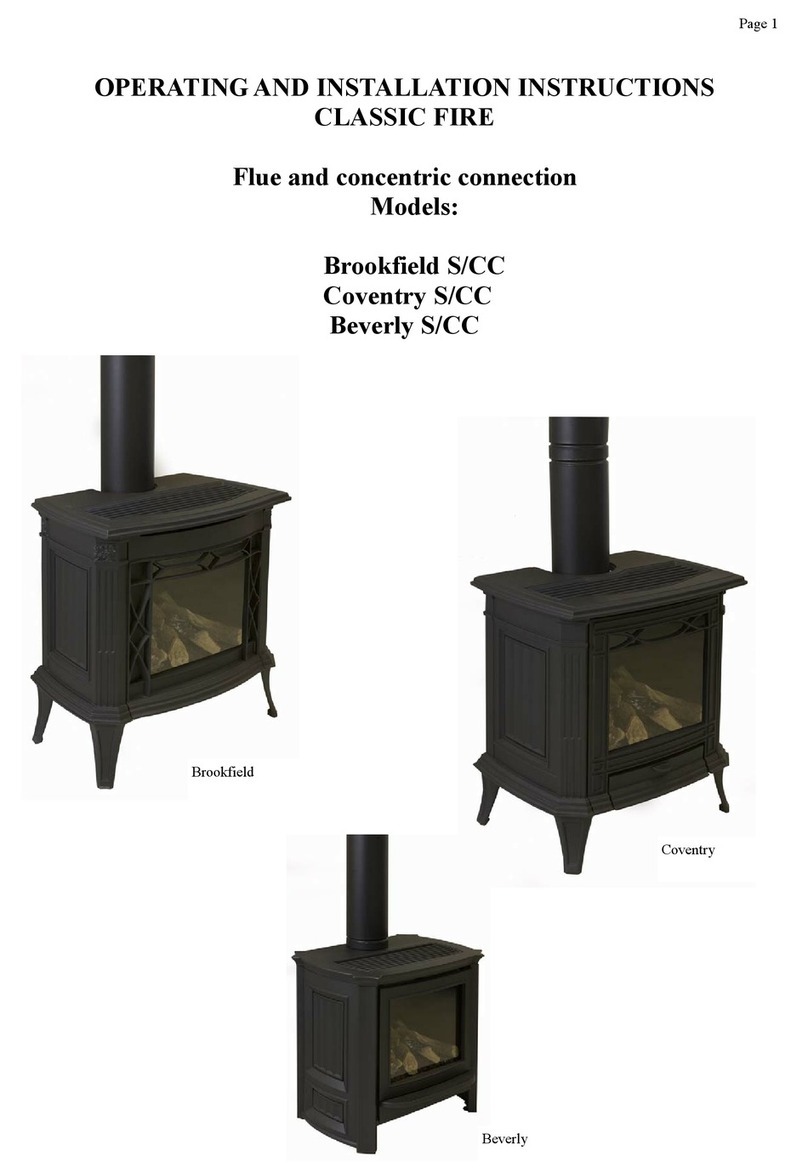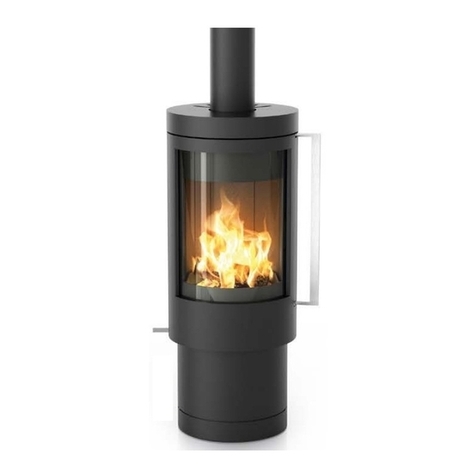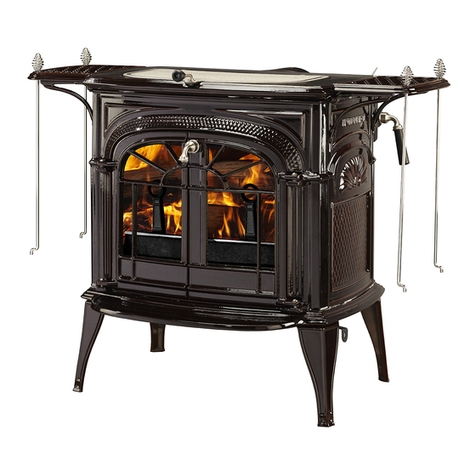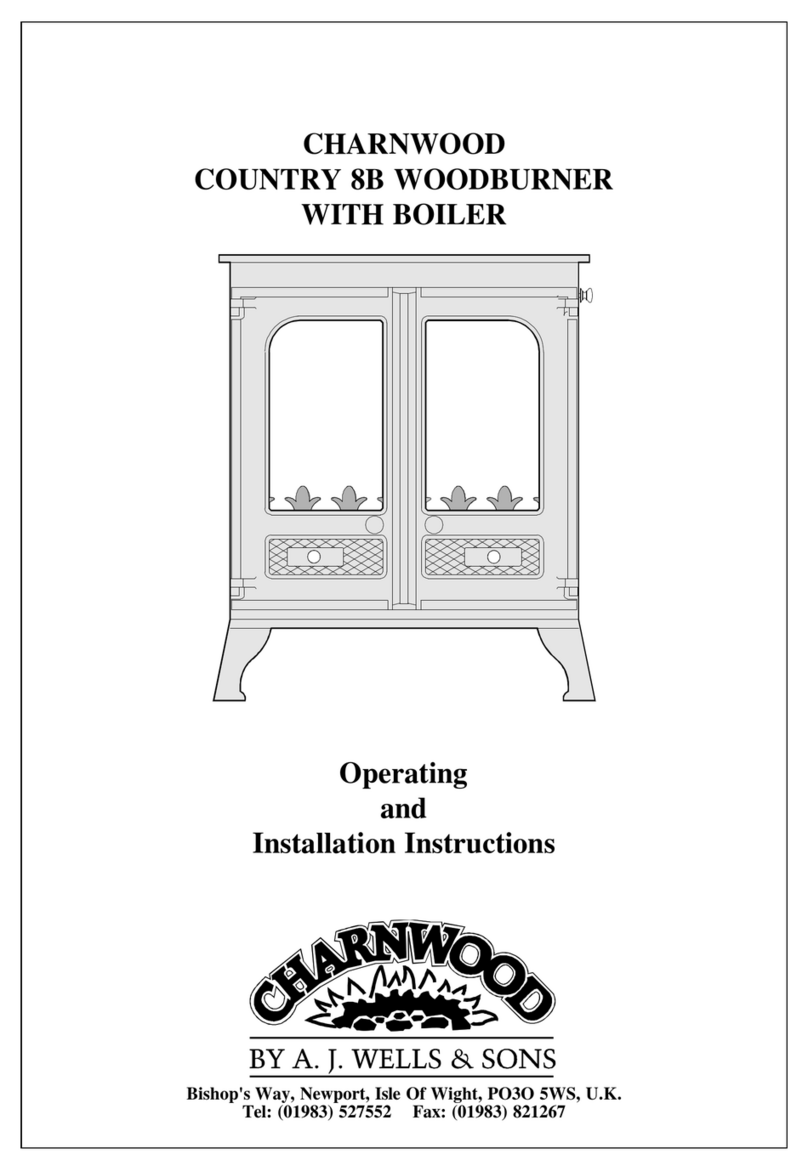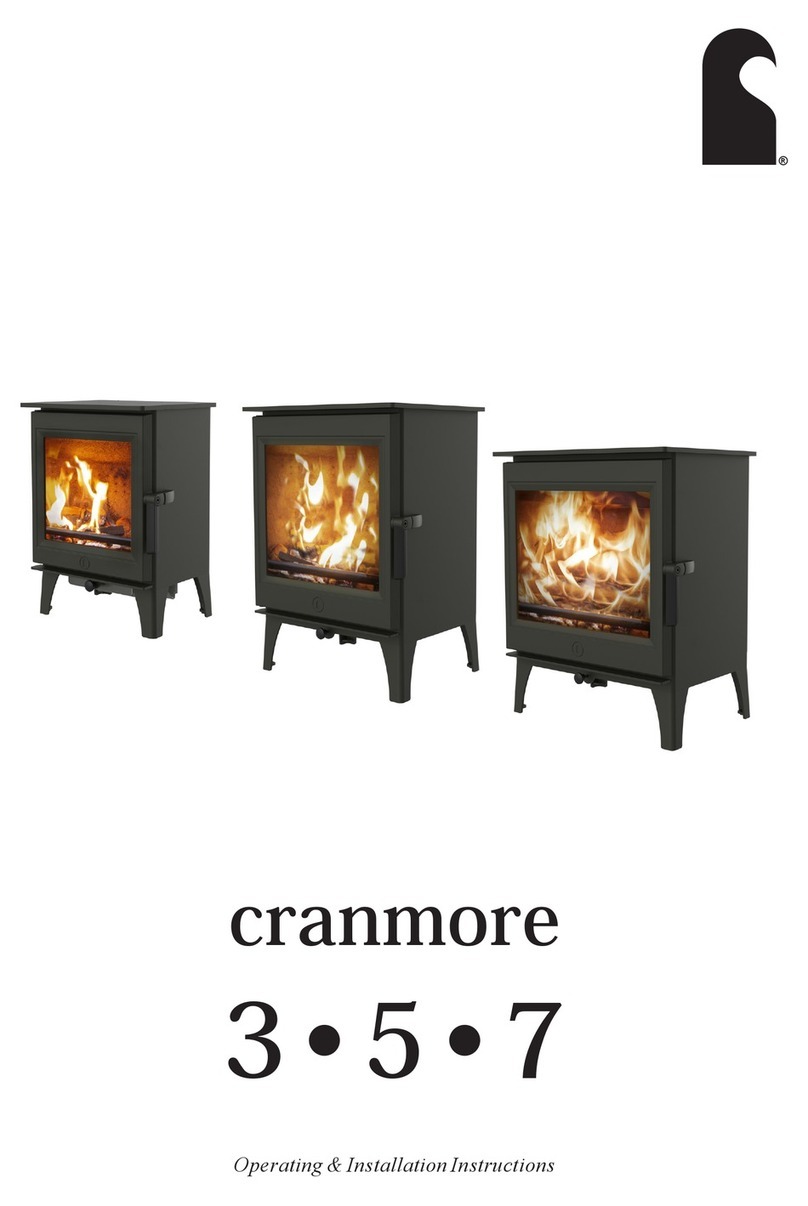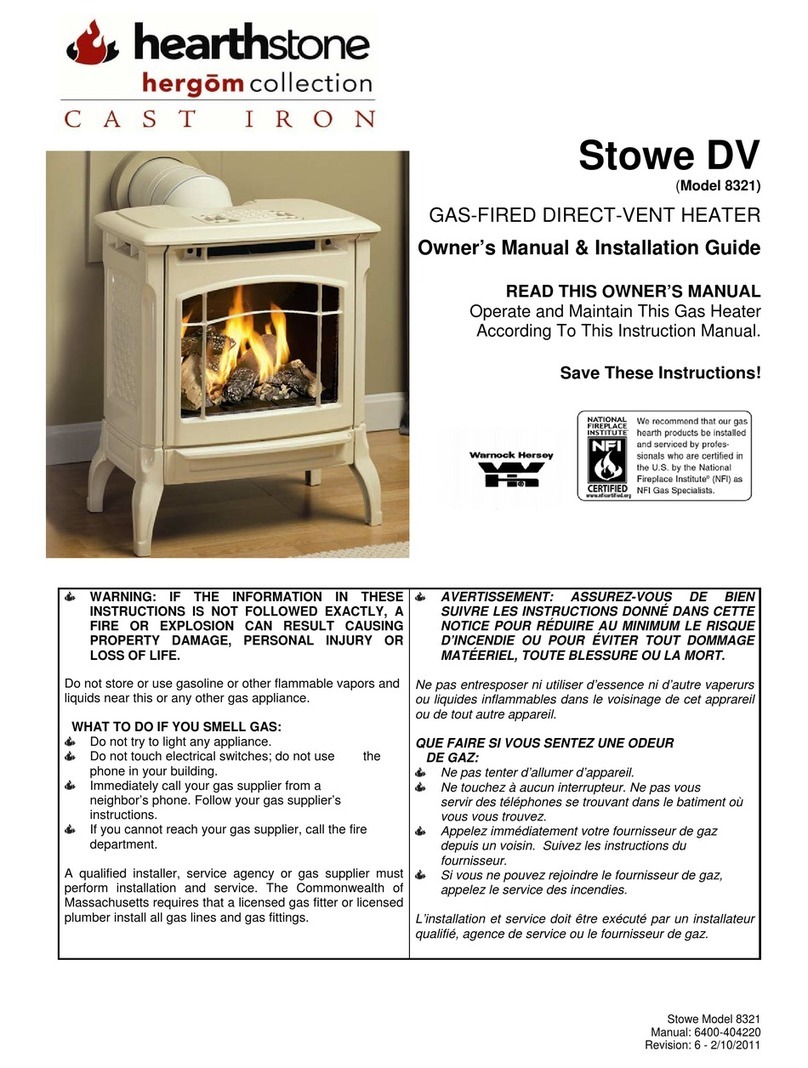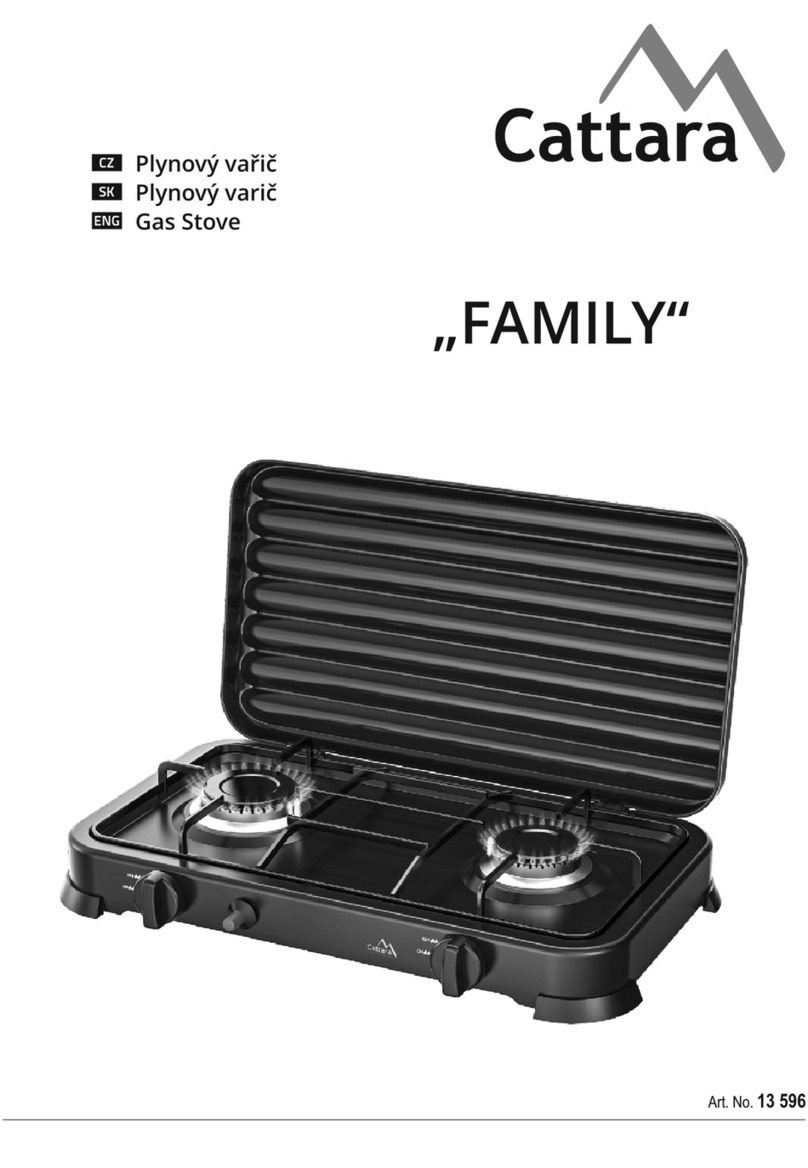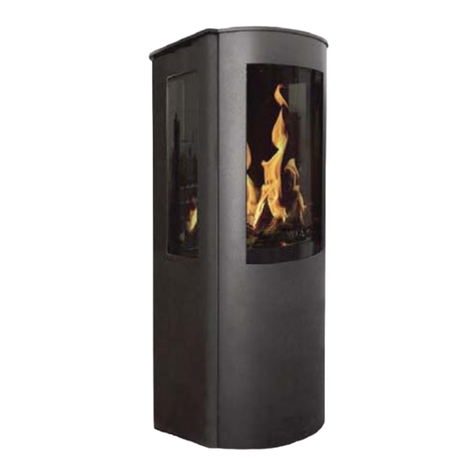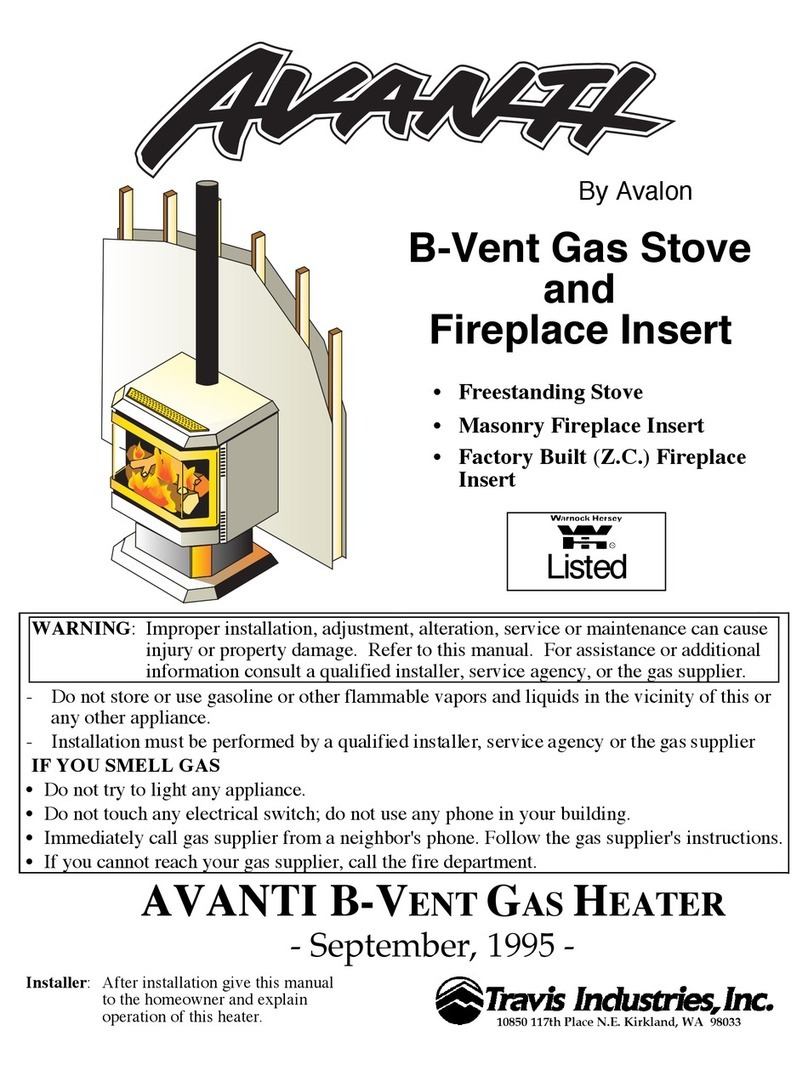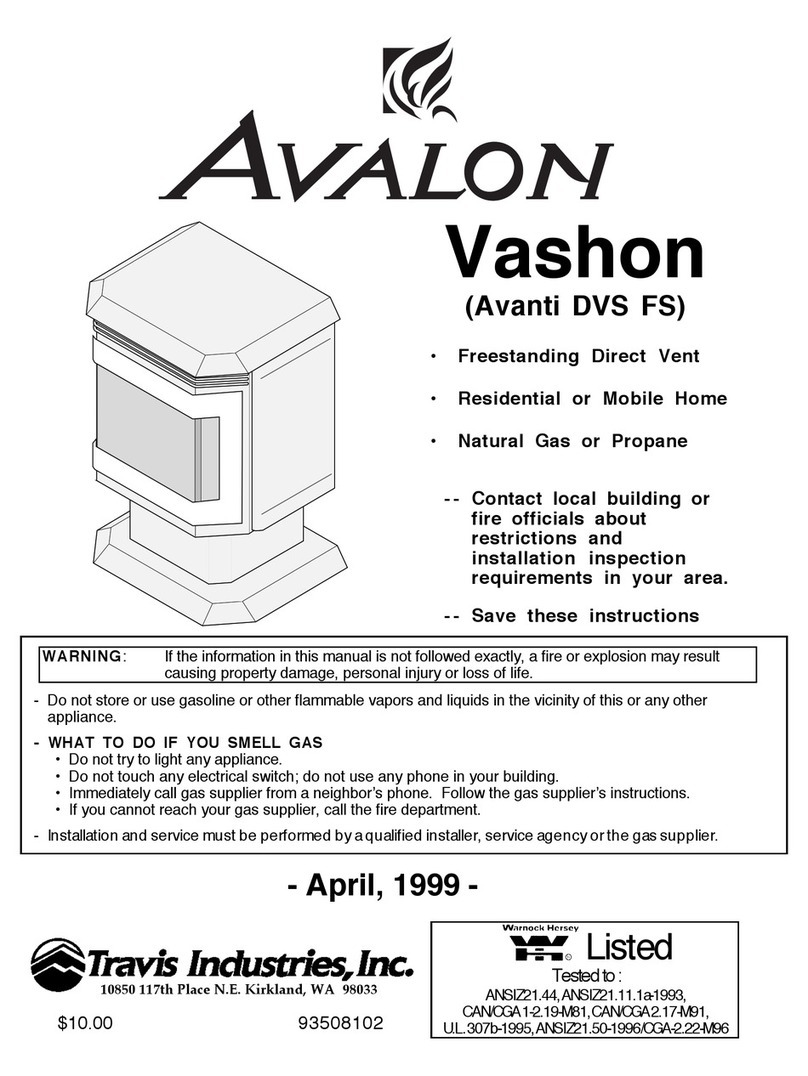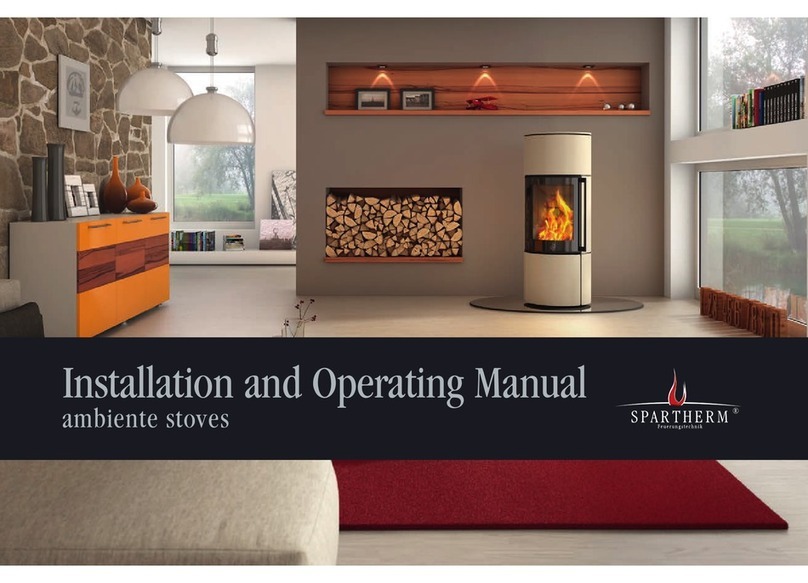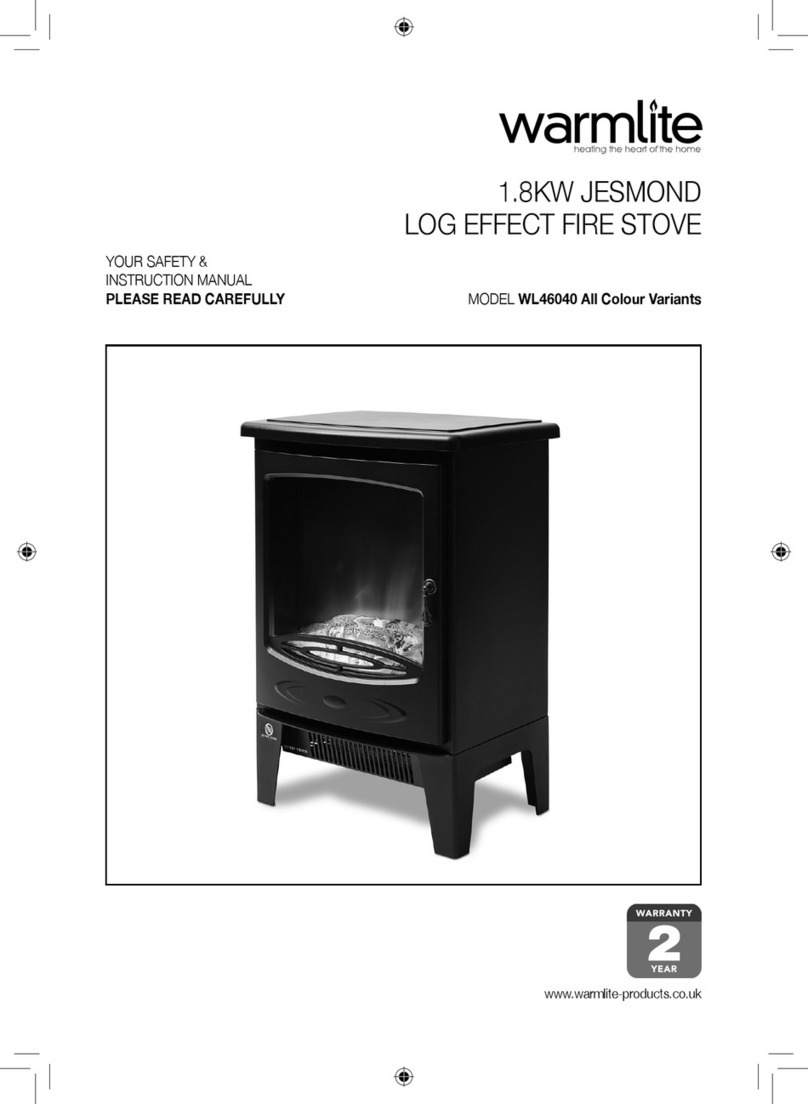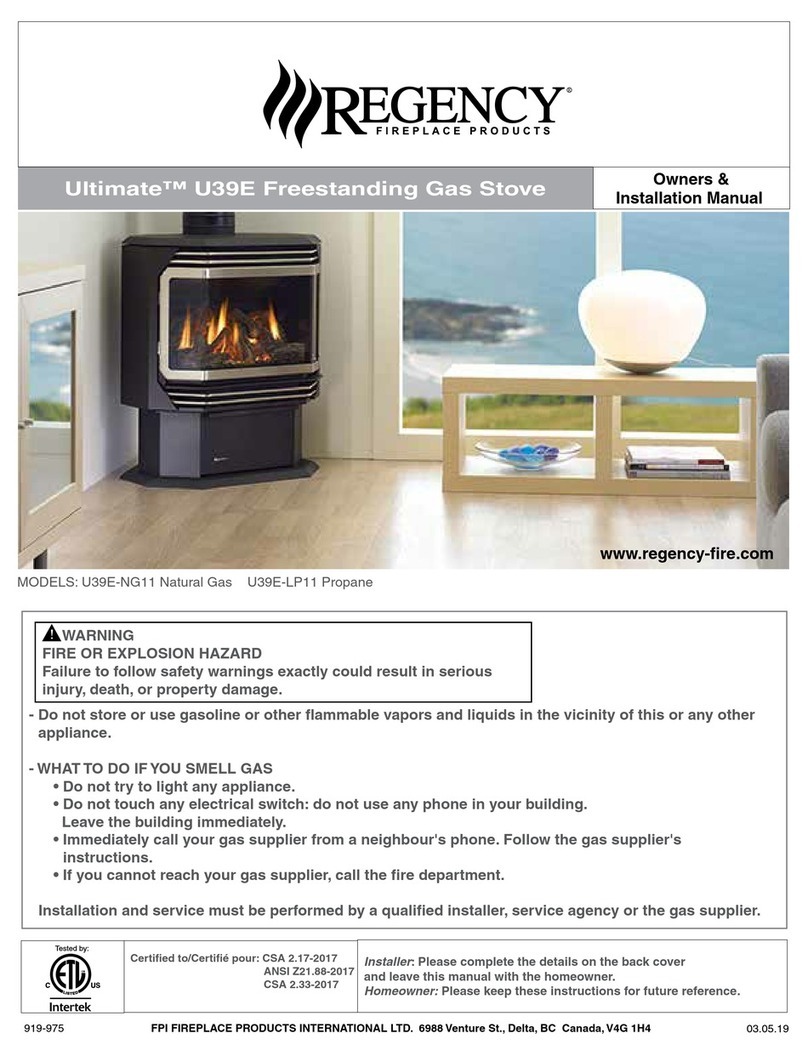Page 5
Island 07.02
abrasive cleaners or pads as theses can
scratch the surface which will weaken
the glass and cause premature failure.
THROAT PLATE AND
FLUEWAY CLEANING
It is important that the throat plate and
all the stove flueways are kept clean in
order to prevent potentially dangerous
fume emission. They should be
cleaned at least monthly, and more
frequently if necessary. It is necessary
to let the fire out completely to carry
out these operations.
The front of the throat plate is pulled
forward and then lowered as shown in
Fig.3. Any sooty deposits should then
be swept from the plate and into the
fire.
Return the throat plate to its correct
position - raise the front of the plate,
push it back and then lower it onto the
retaining lugs.
CHIMNEY SWEEPING
The chimney should be swept at least
twice a year. Where the top outlet or
vertical rear flue connector is used it
will generally be possible to sweep the
chimney through the appliance.
First remove the front fence and the
throat plate. Then sweep the chimney
ensuring that soot is removed from all
horizontal surfaces after sweeping.
In situations where it is not possible to
sweep through the appliance the
installer will have provided alternative
means, such as a soot door. After
sweeping the chimney the appliance
flue outlet and the flue pipe
connecting the stove to the chimney
must be cleaned with a flue brush.
After clearing any soot from within
the stove, replace the throat plate (see
Fig.3.) and the front fence.
Different types of sweep’s brushes are
available to suit different flueways.
For standard brick chimneys a wire
centre sweep’s brush fitted with a
guide wheel is recommended. For
prefabricated insulated chimneys the
manufacturers instructions with regard
to sweeping should be consulted.
OVERNIGHT
BURNING
For overnight burning the fire doors
must be closed.
When burning wood load some large
logs on the fire and allow to burn for
half an hour before closing the door
air slides, (this will help to reduce tar
deposits in the chimney.) Leave the
airwash control slightly open to help
keep the glass clear.
When burning coal or smokeless fuel,
if the fire is very low then open the air
controls and revive the fire, adding a
small amount of fuel if necessary.
Empty the ashpan and poke the fire,
load with fuel, and then close the door
air slides. The airwash control should
be kept slightly open to help keep the
door glass clean.
Some experimentation may be
necessary to find the setting most
suitable for the type of fuel being used
and the draw on the chimney.
To revive the fire, empty the ashpan,
(if burning coal or smokeless fuel),
poke the fire, and open the air controls
to maximum. When the fire is burning
well load on more fuel as necessary
and adjust the air controls to the
desired setting.
CLEANING AND
MAINTENANCE
The stove is finished with a high
temperature paint which will
withstand the temperatures
encountered in normal use. This may
be cleaned with a damp lint-free cloth
when the stove is cold. Should re-
painting become necessary, high
temperature paints are available from
your supplier or from stove shops.
Most deposits on the glass may be
burnt off simply by running the fire at
a fast rate for a few minutes. If it
becomes necessary to clean the glass
then open the doors and allow them to
cool. Clean the glass using a damp
cloth and then wiping over with a dry
cloth. Any stubborn deposits on the
glass may be removed with a
proprietary stove glass cleaner or
ceramic hob cleaner. Do not use
TROUBLE SHOOTING
Fire Will Not Burn.
Check that:
a) the air inlet is not obstructed in any
way,
b) chimneys and flueways are clear,
c) that a suitable fuel is being used,
d) that there is an adequate air supply
into the room,
e) that an extractor fan is not fitted in
the same room as the stove.
f) there is sufficient draw in the
chimney. Once the chimney is warm a
draught reading of at least 2.5 mm
(0.10 inches) water gauge should be
obtained.
Door Glass Blacks Up
Differences in chimney draughts mean
that the best settings of the air controls
will vary for different installations.A
certain amount of experimentation
may be required, however the
following points should be noted and
with a little care should enable the
glass to be kept clean in most
situations:
a) The airwash relies on a supply of
heated air to keep the glass clean,
therefore, when lighting the stove
allow the firebed to become well
established before closing the
airslides. This may also be necessary
when re-fuelling the stove.
b) When re-fuelling keep the fuel as
far back from the front fence as
possible, do not try to fit too much
fuel into the firebox.
c) Never completely close the airwash
control - as a guide it should be at
least a quarter open.
d) The airslides in the doors may be
kept slightly open to assist in keeping
the glass clean.
e) Wet wood or logs overhanging the
front fence will cause the glass to
blacken.
It is always more difficult to keep the
glass clean when running the stove
very slowly for long periods.
If blackening of the glass still occurs
check that all flue connections and the



